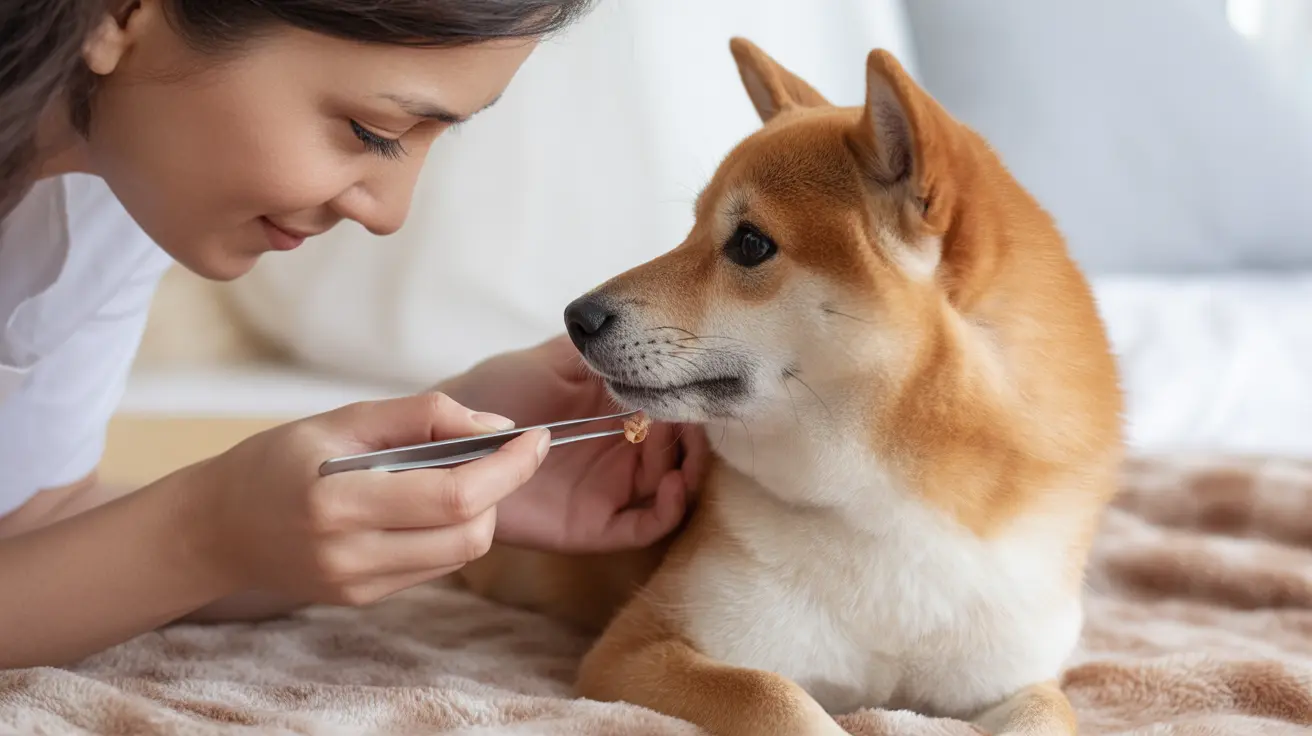Discovering a dried dead tick on your dog can be concerning for any pet owner. While finding a dead tick is generally less worrisome than encountering a live one, it's important to understand the proper steps for removal and potential health implications for your furry friend.
In this comprehensive guide, we'll explore everything you need to know about handling dried dead ticks on dogs, from safe removal techniques to monitoring for potential health issues and implementing effective prevention strategies.
Understanding Dead Ticks on Dogs
Dead ticks often remain attached to dogs due to their specialized mouthparts, which can stay firmly embedded in the skin even after the tick dies. These parasites typically die due to tick preventative medications or when the dog's immune system successfully fights off the invasion.
You can identify a dead tick by its silvery-white appearance, shriveled body, and stiff, curled legs. Unlike live ticks, dead ones won't move or respond to touch, though they may still be firmly attached to your dog's skin.
Health Risks and Concerns
While dead ticks pose less immediate danger than live ones, they still require careful attention. The primary concerns include:
- Potential infection at the bite site
- Residual mouthparts that may cause irritation
- Previous disease transmission if the tick was attached for over 24 hours
- Secondary skin infections from your dog scratching the area
Safe Removal Techniques
Proper removal of a dried dead tick is crucial to prevent complications. Follow these steps:
- Use fine-tipped tweezers or a specialized tick removal tool
- Grasp the tick as close to the skin's surface as possible
- Pull upward with steady, even pressure
- Clean the bite area thoroughly with antiseptic
- Dispose of the tick in alcohol or sealed container
Monitoring Your Dog After Tick Removal
After removing a dead tick, watch for these potential signs of tick-borne illness over the next several weeks:
- Lethargy or decreased energy
- Loss of appetite
- Joint pain or lameness
- Fever
- Swollen lymph nodes
- Unusual bruising or bleeding
Prevention Strategies
Implement these preventive measures to protect your dog from future tick encounters:
- Use year-round tick preventative medications
- Regular grooming and tick checks
- Avoid tick-prone areas during peak seasons
- Keep your yard maintained and treat for ticks if necessary
- Consider environmental modifications to reduce tick habitats
Frequently Asked Questions
Why do dried dead ticks stay attached to my dog even after they die?
Dead ticks remain attached because their mouthparts are designed with barbs that anchor deeply into the skin. Even after death, these structures can keep the tick firmly in place until manually removed.
How can I safely remove a dried dead tick from my dog without causing infection?
Use fine-tipped tweezers to grasp the tick as close to the skin as possible, then pull straight up with steady pressure. Clean the area with antiseptic afterward. Avoid twisting or crushing the tick during removal.
Can a dead tick on my dog still transmit diseases like Lyme disease?
While dead ticks can't actively transmit diseases, if they were attached for more than 24 hours before dying, they may have already transmitted diseases. Monitor your dog for symptoms of tick-borne illnesses.
What signs should I watch for after removing a dried dead tick from my dog?
Watch for signs of infection at the bite site (redness, swelling, warmth) and symptoms of tick-borne diseases (fever, lethargy, joint pain, loss of appetite) for several weeks after removal.
What are the best preventive measures to stop ticks from attaching to my dog?
The best prevention includes using year-round tick preventatives (oral medications, topical treatments, or collars), regular tick checks, avoiding tick-prone areas, and maintaining your yard to reduce tick populations.
Remember, while finding a dried dead tick on your dog isn't usually an emergency, proper removal and monitoring are essential for your pet's health. When in doubt, always consult with your veterinarian, especially if you notice any concerning symptoms after tick removal.






